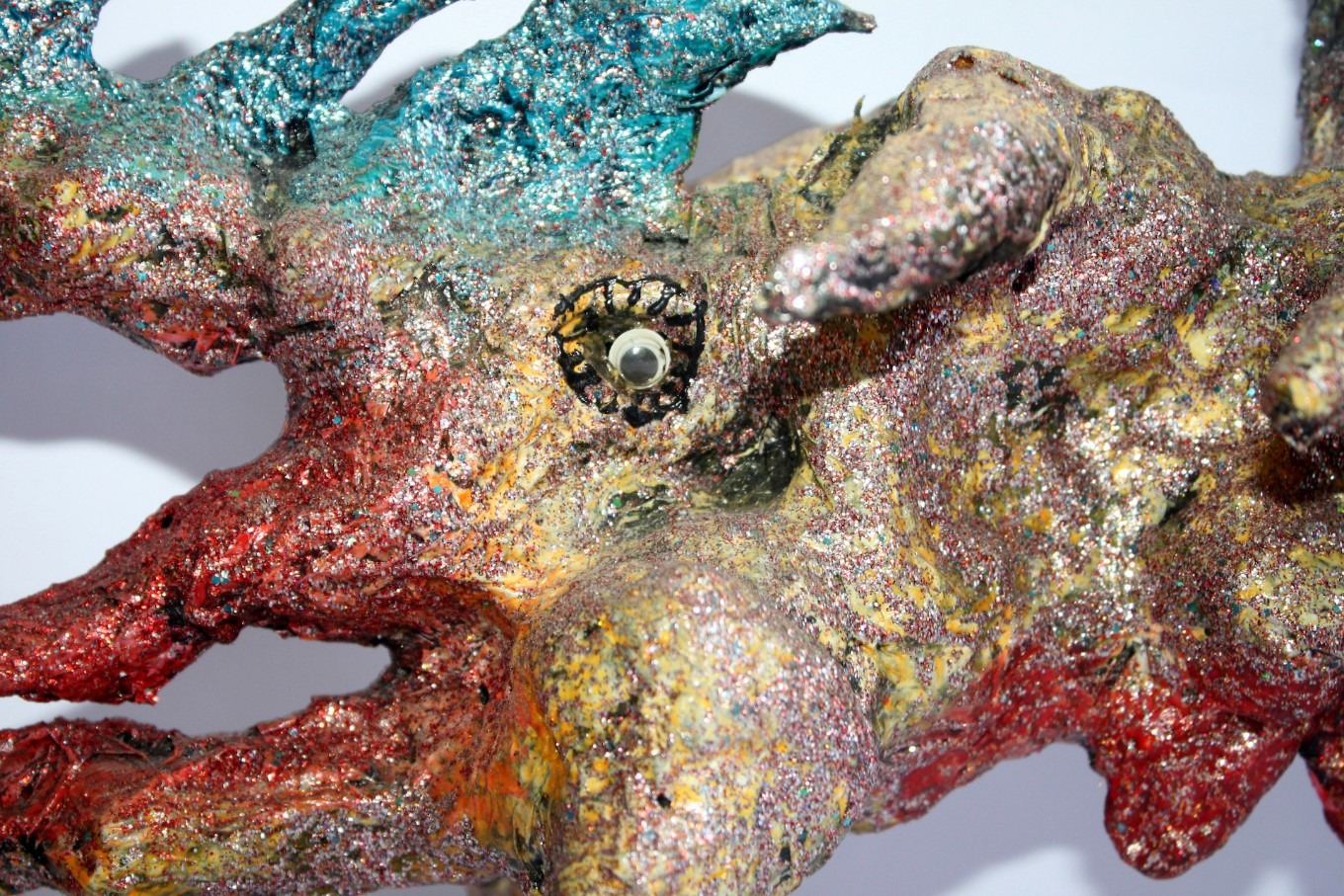
TiTian Art Foundation Online Exhibition Supports Balinese Affected by COVID-19
Tiny eyes peer out from enigmatic, otherworldly creatures. Their contorted bodies are shimmering in colorful metallic hues, endowed with appendages that defy description. Fascinated yet perplexed, I wonder what I am observing. Are these oddities types of oversized micro-organisms that dwell deep inside of me, or aliens from a distant galaxy?
I first discovered the fantastic paper mâché creations of contemporary Balinese artist Ida Bagus Punia Atmaja in Ubud in 2018. His eye-catching constellation of over 100 vibrant mysteries suspended from nylon lines resonated with a distinct charm and aura. In its raw simplicity and uniqueness, his display was one of the most captivating and authentic installations I had seen in Bali for quite some time. The experience was calming and nurturing.
“Ida Bagus Punia Atmaja: A COVID-19 Solidarity Exhibition”, an online presentation of 44 artworks, began on April 28 and continues through to May 28. An initiative of TiTian Art Space and the TiTian Bali Foundation in Nyuh Kuning, Ubud, the e-catalog of Punia’s work is available for download from the TiTian website titianartspace.com/id/.
“The COVID-19 pandemic presented us with a dire and extreme situation. With the lockdown, the postponement of art and cultural events and the halt of domestic and international tourism, the board of Yayasan TiTian Bali [TiTian Bali Foundation] were presented with an enormous challenge. How to remain relevant and make a contribution to the development of Balinese art during this unusual global crisis?” said Rio Riawan, curator of TiTian Art Space and head of research and development of Yayasan TiTian Bali.
“Our response was to develop two new digital programs: art news and education for children away from school and staying home during the lockdown and online exhibitions available to the public through our social media platforms and website,” he said. “TiTian’s first solo online exhibition is a new format and a fundraiser to help reduce the impact of COVID-19. Fifty percent of the proceeds will be donated to the people of Bali affected by the island’s economic downturn.”
“In this period of great calamity and uncertainty it is important that artists continue to make valuable contributions to the development of society,” Rio said, “Art is a welcome respite from our anxieties and the madness of this world.”
“Punia’s works involve a ritualistic, spiritual approach. He has his own way to talk about Bali and his works bring positive messages to inspire humanity,” he said. “He creates artistic concepts and forms that are new. At the same time, sometimes, he is very critical, humorous and even magical. In my opinion, this is a significant development in the way of thinking of a Balinese artist.”
“As a child, I loved the mysterious stories my grandmother told me before sleeping at night; I believed they were real. Later, some of these stories secretly came to life through my drawings,” said Punia, who was born in Jembrana, Bali, in 1979 and studied fine art at the Indonesian Art Institute (ISI), Yogyakarta, in 1998. “I thought what I liked, with regard to creative expressions, others liked also. I discovered, however, that my assumptions were wrong.”
“My ancient satellites came to me like a vision in a dream while sleeping,” Punia said. “They were the response to my prayers I made in a temple to receive divine intervention to help assist my artistic journey and have led me in a new creative direction. They are a representation of taksu [sacred energy].”
“Paper was chosen as the material, despite having no relation to Balinese art traditions, because it was easily processed to form the exact texture I wanted. How to disguise the impression of paper on the surface of the works is a process that I learned myself,” he said of working with paper mâché.
Punia was raised in an upper-caste Brahmin family, his father and grandfather are pendanda, Balinese high priests. Punia’s artwork is based upon his observations and understanding of the results of living in a traditional culture. He reinterprets this not by following traditions but by listening to his inner voice and creating distinct and innovative expressions that present a fresh direction in contemporary Balinese sculpture.
Punia’s collaboration with TiTian Art Space is his second solo exhibition. His first, “Ekonom, Ekonomi, Ekonomis” was held at Gedung GM, Jembrana, in 2009. He was an invited artist in the most crucial Balinese exhibition of 2016, “Merayakan Murni” at Sudakara Art Space, Sanur, which celebrated the legacy of the iconic female Balinese artist I GAK Murniaishi (1966-2006). He was also a participant in the group show “MAHARDIKA” at TiTian Art Space, in October 2019.

